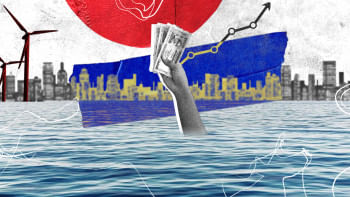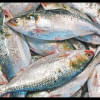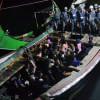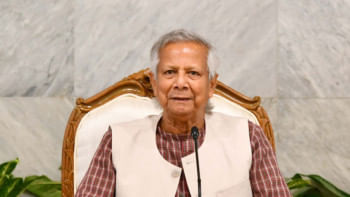Blue economy for Bangladesh's sustainable development

In 2012, Bangladesh and Myanmar resolved their maritime boundary disputes at an international tribunal. The International Tribunal for the Law of the Sea awarded Bangladesh a 12-mile territorial sea around St Martin's Island, overruling Myanmar's argument that it should be divided in half. On the other hand, following decades of disputes and failed negotiations, the maritime boundary between Bangladesh and India was finally established when the Permanent Court of Arbitration delivered its award on July 7, 2014. Following both legal battles, Bangladesh emerged victorious, securing rights to a substantial maritime area in the Bay of Bengal.
These triumphs ultimately present the country with exciting prospects for bolstering economic growth, improving livelihoods, and generating employment through sustainable use of oceanic resources, all while maintaining the well-being of the ecosystem. This area of development is commonly known as the blue economy.
Our nation's sovereignty now extends up to 354 nautical miles from the Chattogram seaport, encompassing oceanic resources and mainland infrastructure. Ownership of this maritime region is a significant honour, and we must invest in it to achieve its full potential. The concept of a blue economy perceives oceans and seas as "development spaces," where conservation, sustainable utilisation of living resources, mineral and oil extraction, bio-prospecting, sustainable energy production, and marine transport can be combined through spatial planning. After settling maritime boundary disagreements with Myanmar and India, Bangladesh declared its intention to utilise ocean resources for future economic growth. It formulated extensive plans for using ocean space, established explicit objectives for sustainable development, and enacted essential policy support. But tangible steps are yet to be taken, though we have adequate human resources, infrastructure-building capabilities, experts, entrepreneurs, and the strength to maintain safety and security.
Bangladesh's blue economy needs immediate policy support to utilise and conserve marine resources effectively. The Bay of Bengal handles a large majority of Bangladesh's imports and exports, while coastal regions in Bangladesh are inhabited by around 30 million people.
To maximise opportunities from the vast seabed and surface area, officials, experts, and privately funded surveys must identify ocean economy industries. Measuring the economic value of natural capital and considering geographic proximity to the ocean in the long term is essential.
According to a 2018 World Bank report, the ocean economy contributes $6.2 billion or three percent of GDP to Bangladesh. This economy comprises tourism and recreation, marine fisheries and aquaculture, transport, and offshore oil and gas extraction. The report recommended a coordinated planning process and long-term strategy for Bangladesh to transition to a blue economy. It also emphasised the need to remove bottlenecks and constraints in resource exploitation. To maximise opportunities from the vast seabed and surface area, officials, experts, and privately funded surveys must identify ocean economy industries. Measuring the economic value of natural capital and considering geographic proximity to the ocean in the long term is essential.
Bangladesh has the potential to benefit from its sea resources, such as sea fish, fish oil, and other marine aquatic products. The private sector in Bangladesh can support sustainable coastal tourism and finance the introduction of various kinds of water sports, cruises, etc for recreational activities and to boost tourism. Artificial islands in the sea, near the coasts, could also be a great draw for tourism.
To maximise benefits from the sea, Bangladesh must take necessary pragmatic steps, backed by well-calibrated policy support defined jointly by close collaboration between public and private sectors to achieve a common goal of development and prosperity. The blue economy can eradicate poverty and is one of the essential tools available for the country to achieve sustainable development goals. This type of economy develops the ocean economy sustainably as its primary products are mining, ocean renewable energy, sea salt production, marine trade, shipping and transport, marine tourism, marine education and research, maritime surveillance, marine spatial planning, and many others.
The Bay of Bengal boasts enormous potential for renewable energy production through wind, tidal biomass, thermal conversion, and salinity gradients. To achieve a sustainable blue economy in Bangladesh, economic actors must establish an integrated business model that aligns with national and global developments. Investing in the ocean economy sectors and building capacity are crucial steps towards realising this potential. However, ensuring maritime security, preserving marine environments, conserving marine resources, and preventing marine pollution, piracy, trafficking and macro-terrorism are equally important. Luckily, modern combating systems have improved security. With extensive research, expert recruitment, investment and policy support, Bangladesh can leverage its existing marine science and biology institutions to achieve sustainable development goals and boost its economy.
Syed Ershad Ahmed is president of the American Chamber of Commerce in Bangladesh and former president of Foreign Investors' Chamber of Commerce and Industry.
Views expressed in this article are the author's own.
Follow The Daily Star Opinion on Facebook for the latest opinions, commentaries and analyses by experts and professionals. To contribute your article or letter to The Daily Star Opinion, see our guidelines for submission.

 For all latest news, follow The Daily Star's Google News channel.
For all latest news, follow The Daily Star's Google News channel. 









Comments